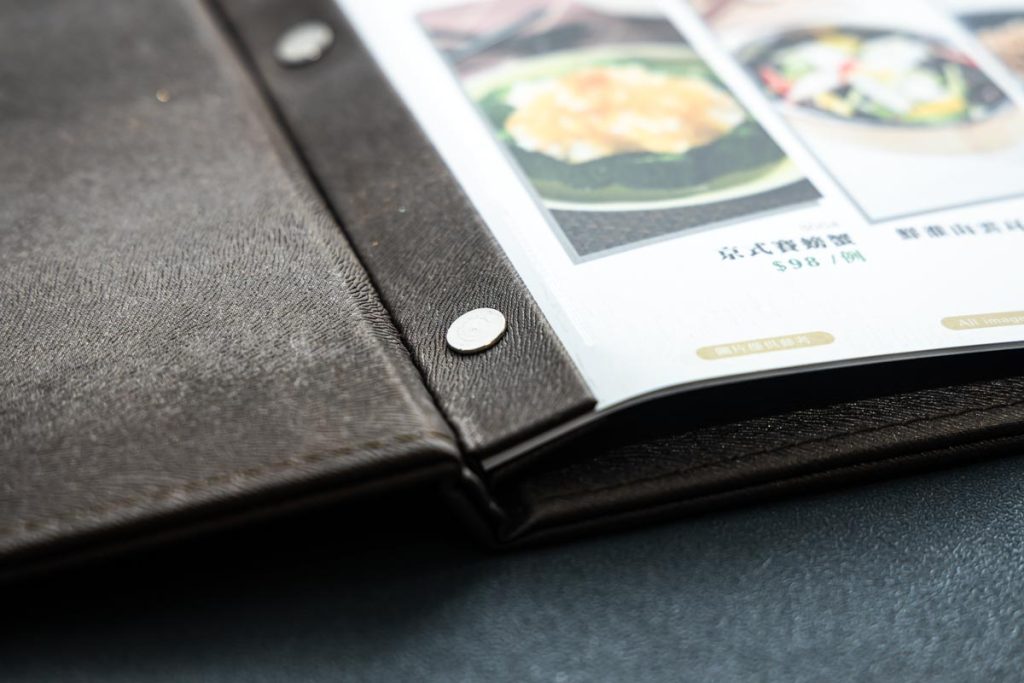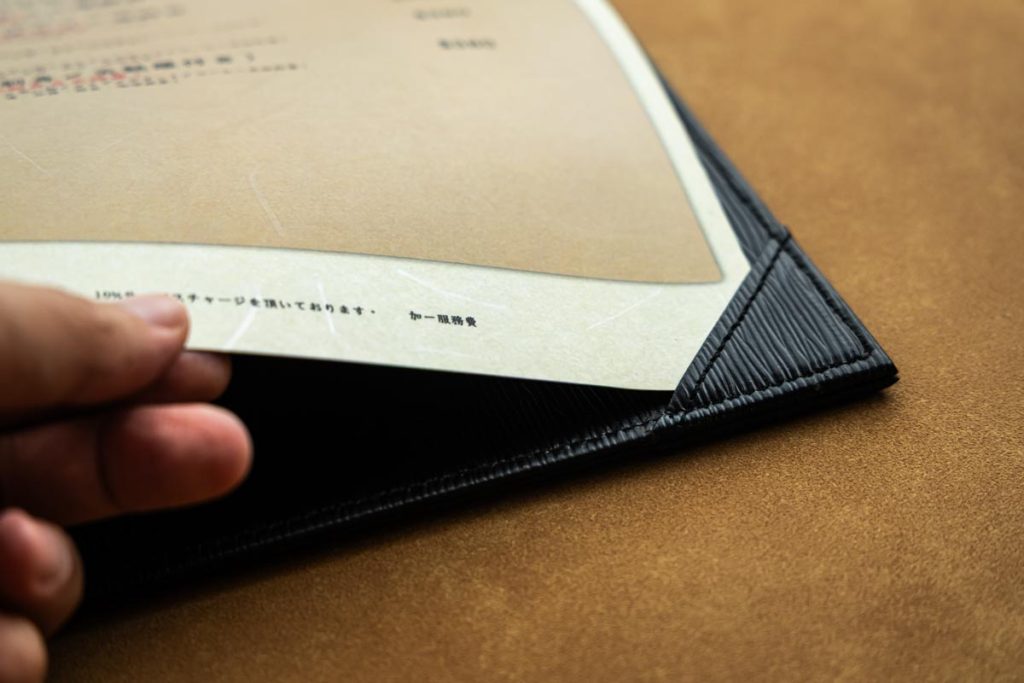Streamline Menu Management with Smart Paper and Binding Choices
When designing your restaurant’s menu, the type of paper and binding method you choose can significantly affect how easily your staff can update menu content on a regular basis.
Paper Types and Design Tips
You can choose between glossy paper and matte paper for your menu’s inner pages. Each offers a different thickness, texture, and visual feel, allowing you to match your selection with your restaurant’s atmosphere and brand image.
- Glossy Paper: Offers a vibrant, luxurious look. Ideal for upscale presentations.
- Matte Paper: Provides a subdued, stylish impression. Great for modern or culture-driven concepts.

Glossy Paper: Stunning but Sensitive to Lighting
Glossy paper has a smooth surface that enhances color vibrancy and creates a polished appearance. However, its high reflectivity can be problematic under certain lighting conditions—especially in venues with overhead spotlights. At certain angles (e.g., 45 degrees), reflections may obscure the text, requiring guests to adjust the menu’s position to read comfortably. This could affect the dining experience, so it’s important to evaluate your lighting setup before choosing glossy paper.

Matte Paper: Subtle, Stylish, and Practical
While matte paper may not reproduce colors as vividly as glossy paper, it offers a tactile richness and a refined aesthetic—perfect for fashion-forward or minimalist interiors. It’s also more affordable and less reflective, making it ideal for restaurants with spotlight-heavy lighting. Matte paper can evoke the feel of a lifestyle magazine, adding a unique charm to your menu presentation.
Beyond Printing: Flexible Page Options
Printed pages aren’t your only option. You can also use:
- Transparent PVC pockets to insert your own printed sheets
- Oxford paper for handwritten menus that can be updated instantly
These alternatives offer greater flexibility and allow for more personalized menu styles.
Flexible Binding Methods to Reduce Workload
Using PVC pockets or writable paper means you can update your menu without reprinting the entire book. This is especially useful for seasonal items or daily specials.

A4 Menu Folder Compatibility
If you opt for an A4-sized menu cover, you can use a standard 3-hole punch to insert your own printed A4 sheets. This makes it easy to swap out pages for events, promotions, or seasonal updates—saving time and improving staff efficiency.
Pro Tip: Use 30-Hole A4 Paper as a Substitute
For even greater flexibility, you can use 30-hole A4 paper with a 3-hole punch. Simply print your menu, punch the holes, and insert the pages into your cover. This method allows for quick updates and seamless transitions for limited-time offerings or special occasions.

Minimal Page Count? Try the Corner Insert Style
If your menu is compact—just two pages, for example—the corner insert style is a smart, cost-effective option. This format features a simple, foldable cover where you insert the menu sheet into all four corners—no binding required.
It offers a classic, elegant, and minimalist look, and is especially recommended for:
- Western restaurants
- Drink menus
- Japanese establishments (e.g., omakase or kaiseki-style venues)
Despite its simplicity, the finish feels premium and refined.

